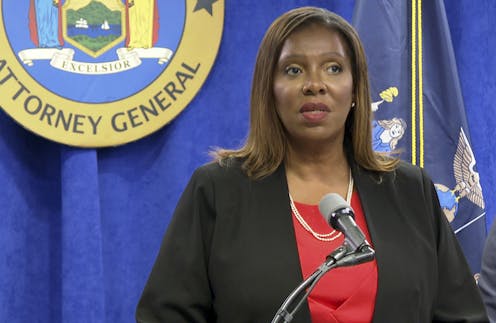5 #MeToo takeaways from Andrew Cuomo and Activision Blizzard sex harassment scandals
- Written by Elizabeth C. Tippett, Associate Professor of Law, University of Oregon
 New York Attorney General Letitia James’ investigation into Cuomo sealed his fate.AP Photo/Ted Shaffrey
New York Attorney General Letitia James’ investigation into Cuomo sealed his fate.AP Photo/Ted ShaffreyTarana Burke’s #MeToo movement has evolved in the four years since it exploded on the national scene with the Weinstein scandal.
From a flurry of #MeToo-related headlines in 2017, the movement has now produced a broad array of legal...
Read more: 5 #MeToo takeaways from Andrew Cuomo and Activision Blizzard sex harassment scandals

